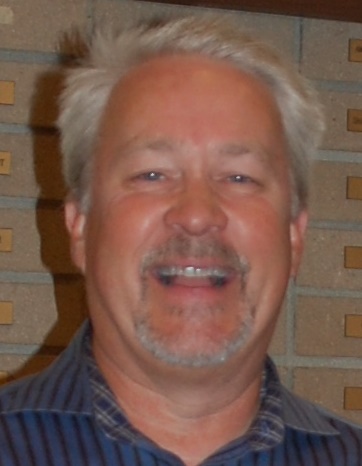
Disclosure: This post is sponsored by VisiumKMS and reflects their views, opinions, and insights.
As more companies in the chemical process and refining industry seek safety management solutions, some pertinent questions come to mind. For example, "How has the approach to process safety developed over the years? What best practices aid in achieving operational excellence? Why is pre-startup safety review (PSSR) equally critical to industrial safety as management of change (MOC)?” and finally, “What role does the AIChE Spring Meeting & Global Congress on Process Safety (GCPS) and the Center for Chemical Process Safety (CCPS) play in developing process safety?” More companies are turning to VisiumKMS for solutions in operational risk management. Their software and services aid efforts necessary to comply with the U.S. Occupational Safety and Health Administration’s (OSHA’s), Process Safety Management (PSM), Standard and the Risk Management Program (RMP) Rules.
I had a chance to catch up with Mike Bearrow from VisiumKMS prior to this year's AIChE Spring Meeting & GCPS to talk about process safety management, management of change, and pre-startup safety review. If you are attending the Spring Meeting and GCPS, make sure to stop by VisiumKMS's exhibit table (#1009) to learn more.
How have you seen companies’ approach to process safety culture develop over the past few years?
More and more companies in the chemical process and refining industry are choosing process safety management solutions that are best of breed instead of choosing a monolithic, 50+ module solution that is not designed for operations or production. Companies are deciding to use commercial best-of-breed solutions that are designed by process safety professionals instead of trying to design and maintain a solution themselves or use one that is not really fit for purpose. Large and small companies alike have found that solutions vital for process safety and risk management execution are too important to be bundled in with a solution designed for maintenance or finance or environmental management.
ERP and multi-module "we cover everything" applications are simply not useful in the field for managing process safety. In fact most such solutions aren't good for much besides data aggregation and reporting. Process safety excellence begins and ends with performance at a site or facility level. Therefore, the tools of process safety execution must be made specifically for the men and the women who are in the middle of the hazard and must manage risk day in and day out. VisiumKMS is such a solution.
What are some management of change best practices that companies can employ to achieve operational excellence?
Management of change best practice has been developing for many years. Most companies have chosen to automate their management of change process as well as the pre-startup safety review (PSSR) process. Management of change best practice begins with configuring a workflow that is tailored for the people at the site level who do the work. At a minimum, a company will need in-kind change workflows as well as not-in-kind workflows.
Our customers also have workflows specific to emergency change, temporary change as well as PSSR without MOC and MOC without PSSR. In addition to the MOC workflows, it is necessary to have content (smart checklists) that is configurable to the management of change type. This means if you are changing chemical or catalyst, you will have an evaluation and PSSR designed specifically for that kind of change. Asking questions that are “NA” too often encourages bad behaviors and sub-optimizes the MOC process and PSSR processes. It is also important for MOC and PSSR reporting and the notification and escalation process to be site configurable. Any hint or inference that the MOC solution is rigid and not specifically made for operations will lead to its misuse or nonuse.
So MOC best practice includes configurable workflows, configurable content that aligns with change category or type, and configurable notification/reporting. Best practice means the ability to tweak and tune smart checklists at a local level, and it means the ability to control at a local level what users can and cannot do in an automated solution.
Pre-startup safety review does not get talked about as much as management of change, but it is also critical to ensuring industrial safety. Can you share some more information with us on that?
Most engineers in the chemical process industry talk about MOC with authority, but you rarely hear them mention PSSR in the same breath. It seems that all of the elements of process safety management (PSM) are important for discussion but one: PSSR or pre-startup safety review. But why? I am not sure, but it is the final check (review) that might just save your skin someday. That’s why it is part of the OSHA PSM standard and EPA RMP Rule. PSSR is one of the 14 elements of the OSHA standard; PSSR was, and is, as important as any of the elements of PSM/RMP/BSEE for two reasons. It is designed to give you pause and ensure a thoughtful analysis of whether you are ready to push the “go” button. There are two facets to PSSR.
First, PSSR is a redundant check that a change has been reviewed, analysed, approved and accomplished in a quality manner. "In a quality manner” means the change has been accomplished, usually by maintenance staff, in a manner acceptable by operations and in alignment with the design and operating intent of the facility. The change must be completely done, and well done, before it is accepted by operations.
Secondly, a PSSR is intended to be a check that all process safety information has been updated and all the training has been accomplished concerning the change. That is no trivial matter; two-thirds of all incidents are caused by human error. Human reliability is heavily influenced by procedures and the associated training, so we don’t want to forget that. Next, and just as important, process safety information needs to be kept up to date. This is important for two reasons. Information such as process and instrumentation diagrams are used for decision-making all the time. If P&IDs are inaccurate, bad decisions can result. Also, P&IDs are the basis for unit wise process hazard analyses. If they are incorrect, hazards can be missed and incorrect decisions can result in incidents.
Beyond that, PSSR can be used when no MOC or change has occurred. After a turnaround or shutdown, a pre-startup safety review is required. Companies also use PSSR when bringing a unit out of mothballs. We might call this check something else like a readiness review or punch list, but these are PSSRs. I think most people see PSSR as a redundant (not redundant like in the UK where someone is let go) step, and as unnecessary. That is flat out wrong. MOC and PSSR are not the same process, and they may not even be connected or joined in some workflow with an MOC.
How do you view the role of the AIChE Spring Meeting & GCPS in continuing the development of process safety?
Rolls-Royce is careful in their choice of symposiums and conferences to attend. We believe the AIChE Spring Meeting & GCPS and CCPS are important to the chemical process and refining industries as a forum where ideas can be shared to drive process safety excellence, where best practices are shared freely and lessons learned are discussed. In addition, the Global Congress on Process Safety provides an opportunity for companies to meet in person with solution providers like Rolls-Royce who can be an integral part of their success.
Learn more about VisiumKMS process safety management solutions.
Learn more about VisiumKMS management of change solutions.

Mike Bearrow
Mike Bearrow is a degreed mechanical engineer and a professional engineer in the state of Texas. He has 37 years of risk management and process safety management experience applied in the aerospace, oil and gas, chemical process and refining industries. He has been with Rolls-Royce for 27 years and is currently the VP of VisiumKMS Customer Business and the Global Process Safety Lead.
VisiumKMS provides a premier integrated risk management software solution designed for operational risk management, HSE, process safety and quality management professionals. Easily manage change, track corrective and preventive actions, conduct risk assessments, audit facilities and manage incident investigations. Their intuitive solutions make it easy to streamline your management processes all from one seamless platform and leverage powerful best practice workflows, content, communication and reporting functionality. As a VisiumKMS user, you can ensure that all the steps are addressed in the right order and your operational experience and learnings are embedded. VisiumKMS software addresses OSHA PSM, EPA RMP, Seveso, ISO 9000/14001/45001, and more. Visit http://www.visiumkms.com to learn more.
Disclosure: This post is sponsored by VisiumKMS and reflects their views, opinions, and insights.


